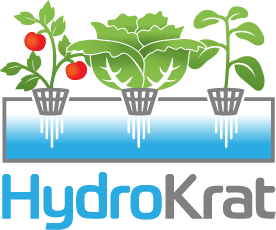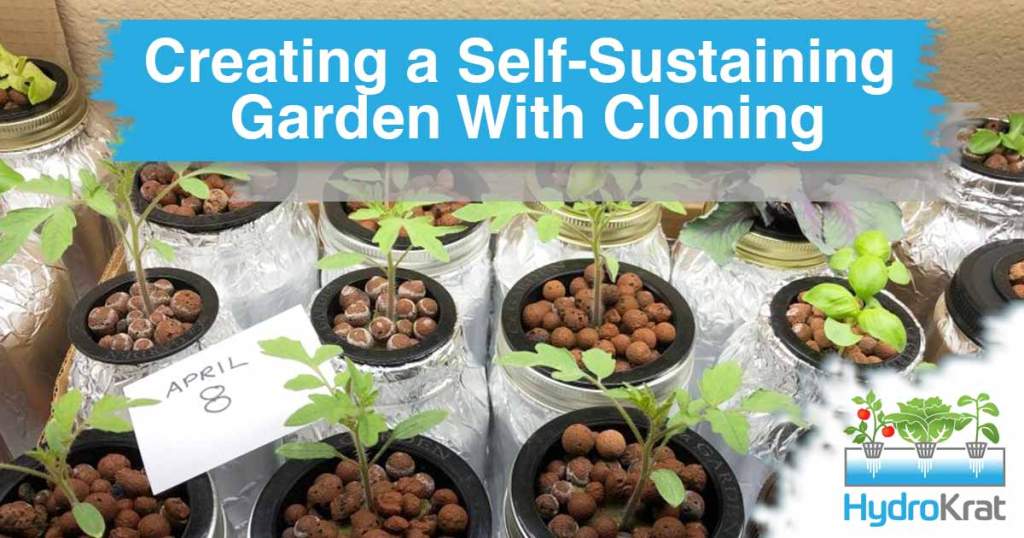One of the many benefits of hydroponic gardening is that it is an efficient way to grow plants efficiently and quickly. But what happens when you grow the perfect plant? You, of course, want it to keep producing. That is why many gardeners opt to clone their plants, guaranteeing the same, consistent results as the original plant.
WHAT IS PLANT CLONING?
Plant cloning has been used by gardeners around the world for centuries. So, what exactly is cloning? Put simply, cloning involves taking a cutting from one plant and successfully establishing roots to grow a new plant. Once the cutting has taken root, it is then considered a clone because it is an exact genetic replica of its mother plant. Mastering this process means that a gardener can maintain consistent results throughout the year.
While clones can be bought, the health of the clone must be carefully analyzed. Some questions you may want to ask before purchasing a cloned plant include:
- Did the grower use pesticides on their mother plant?
- Is the clone free of pests, such as spider mites?
- How certain is the grower that they’re selling the type of plant they claim to be selling?
- Are there pathogens hiding on the clone?
Rather than risk introducing pests and disease into their own gardens, many growers choose to clone their own plants and keep their favorite produce in rotation.
WHY SHOULD I CONSIDER CLONING PLANTS?
With a history dating back thousands of years, plant cloning is a proven way to create a self-sustaining garden. And growers who choose to attempt plant cloning themselves find there are many other benefits to the practice, including:
- A cloned plant has the identical traits of its mother plant, meaning gardeners improve the chances of producing a similar harvest each time. That is one of the many desirable traitsgardeners can replicate through the cloning process.
- With a clone, gardeners can more accurately predict how their new plant will grow. Under the same environmental conditions, a clone will grow similarly to its mother plant.
- If you want a faster reproduction time, cloning plants is the way to go. Typically, a grower will see roots within a couple of weeks of taking a cutting from a mother plant. Because it already has adult leaves, and then a root system, a cloned plant will be weeks ahead of plants that are started from seeds at the same time.
- With seeds, you never know if one will be a dud. It can take weeks to see any growth to see if your seeds are developing as they should. With clones, that is something you will not have to worry about, because you will instantly be able to see if your cutting is failing.
- Another important trait of cloned plants is their pest resistance. If the mother plant showed signs that it was resistant to pests and disease, it is almost certain that characteristic was also passed down to the clone.
Simply put, cloning is the best way to replicate successful plants. By developing plant clones, gardeners can recreate all the desired characteristics of the parent plant over and over again.
WHICH PLANTS ARE BEST FOR CLONING?
While nearly any plant can be cloned, some may be better suited for this kind of process than others. The popular thought on this topic is that plants with sturdier, or thicker, stems will be more successful. That includes plants like tomatoes or peppers. Herbs are also a good choice for cloning, including varieties of thyme, sage, basil and mint. Plants with no stalks, or that are considered flimsy, such as lettuce and other leafy greens, will not be able to clone very well.
Another consideration when choosing which plants to clone is understanding whether a plant is a dicot or a monocot. If you are unfamiliar with those terms, a dicot is a plant that develops branches, including herbs and vine plants. Monocots, on the other hand, are plants that have only a single stalk, such as corn, onions, or asparagus. When it comes to cloning, dicots are more successful because there are more branches that can be cut and cloned while keeping the mother plant intact.
HOW DO YOU CLONE PLANTS?
Cloning a plant is a much simpler process than it may seem. While there are many ways to clone a plant, the easiest method is to make a cutting, which is the process of taking a healthy plant, replanting, and letting it grow.
Here is what you will need:
- A healthy plant that you want to clone
- A rooting hormone, like Garden Safe – Take Root
- Empty seedling trays and enough grow plugs
- Scissors or clippers
Yes, you will only need four tools to help you get started. Now, there are only four steps to follow.
- Cut the plant. You will want to carefully choose which part of the plant you wish to cut. Many experienced gardeners suggest cutting the stem at the tip, because this is where there is already new growth. Another option is to cut the stem in the middle, which can be especially effective if there are new leaf buds along the stem.
- Angle your cut. Angled cuts are used for a couple of reasons in plant cloning. First, it creates a larger surface area for your rooting hormone, which you may need to encourage root development. Also, cutting leaves from your new plant will route energy into growing roots, instead of leaves, which is most important at this stage of the cloning process.
- Add rooting hormone and re-plant your clone. The rooting hormone needs to be added to the new plant immediately after its cut, while there is more moisture to soak it in. Once the hormone is on the plant, all the grower needs to do is re-plant the cutting.
- Wait for the harvest. After just a couple of weeks, your new plant should have started forming its own root system.
GET STARTED
Cloning plants can be used across many methods of gardening, including hydroponics. The main difference is that you will place the cutting into water instead of soil or other growing mediums.
If you are looking for more advice to get started, the experts at Hydroponics Made Simple are there to help. Give them a call at (888) 784 – 9376.


Recent Comments